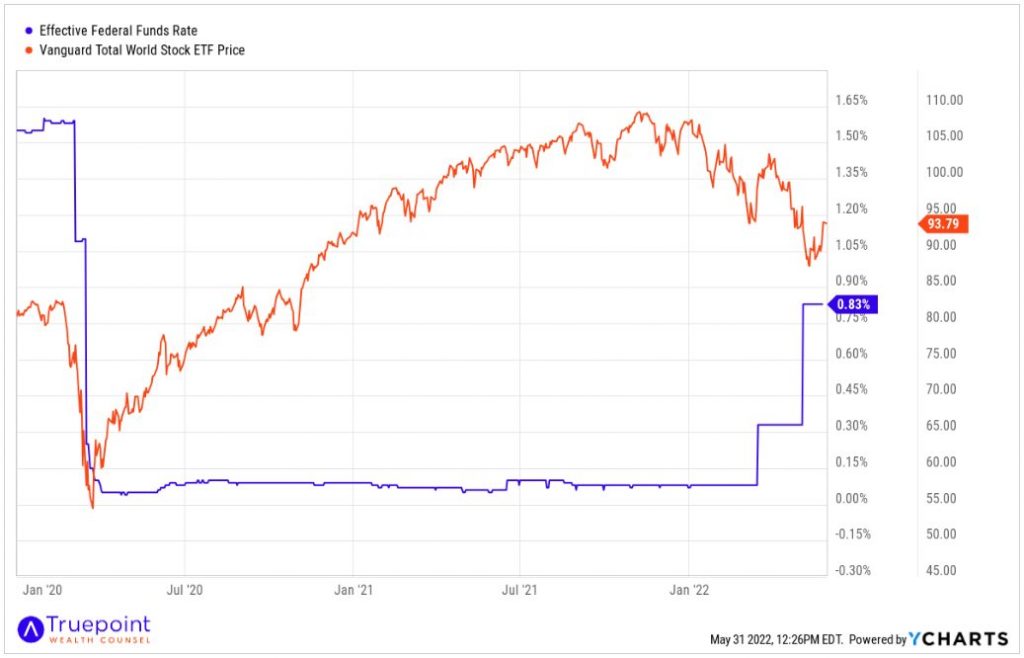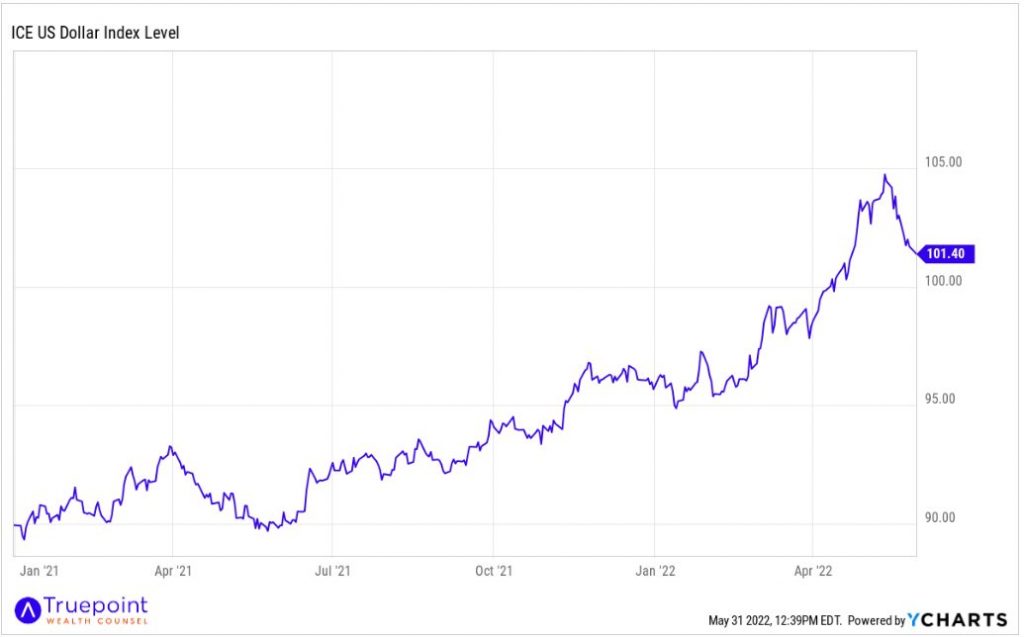Seeing Dead People Yet?
Amid soaring inflation, rising interest rates, and the stock market decline, the New York Times interviewed 10 of the nation’s leading economists. Their responses, in blue, provide valuable insight into our current economic state and where we may be headed.
The decline in interest rates helped ignite the stock market’s most explosive rally ever. Nearly a year later, however, the pressure on those rates is upward and the market has turned jittery.
No question. At the onset of the pandemic, the Fed cut rates to 0% and the stock market doubled. More recently, rising rates have coincided with falling stocks.

The dollar, meanwhile, has been pushed to new highs against many foreign currencies by investors anxious to take advantage of high interest yields in the United States.
Yep. Relative to a basket of other world currencies, the US dollar has surged in value:

Rising rates will threaten the continuation of the recovery. There is nothing that can reverse that trend at the moment; it’s all in the pipeline. And there’s nothing good that can be done, only a choice among bad things.
This echoes a prevalent assessment that rising rates are causing the current market turmoil and that further damage is ahead.
The Fed is in a tricky place – one potential outcome is that they rapidly raise rates to fight inflation and accidentally overdo it, dampening demand too much and causing a recession. Another possibility is that they are behind the curve with their rate increases, and inflation remains painfully high for the foreseeable future.
The path for a “soft landing,” characterized by a slowdown in inflation amid continued economic growth, is narrow. If the Fed doesn’t act carefully, it may be left with “a choice among bad things.”
What happens really depends on the vigor of the economy. If it keeps clicking along, then the rates will go up some more. If the economy shows the effects of the current rates, and that is what happens in our forecasts, the rates will come down some.
As one not known for bold predictions, I can appreciate the impartiality of this statement. If the economy keeps surging, inflation will likely remain elevated, and the Fed will stay on its rate-raising path. If we slip into a recession, we’ll probably see the Fed come to the rescue by cutting interest rates.
Of course, even if you knew the path of interest rates or inflation, you probably wouldn’t be able to profit from that information. Historically, stock returns are positive regardless of the Fed’s interest rate changes. And there isn’t a reliable connection between stock returns and inflation, either.
If you’re still with me here (I know that was a lot of “economic speak”), here’s the big twist, the “I see dead people” moment: All these quotes, while absolutely real, are from interviews conducted and published 39 years ago. So just like when you rewatch The Sixth Sense after you know the twist, feel free to go back and re-read knowing THIS twist. It’s uncanny how applicable these quotes from 1983 are today.
Given the seemingly similar economic environment, you might be wondering about stock returns following that NYT article:
S&P 500 Annualized Returns Beginning August 1983
| 3 Yr | 5 Yr | 10 Yr |
| 18.3% | 15.3% | 14.7% |
We’d love to expect similar returns from here, but the final piece of wisdom from 1983 comes from Secretary of the Treasury, Donald Regan:
“I would not dream of forecasting the stock market. All forecasts on the stock market are evenly divided between right and wrong.”
The details of our current situation differ from 1983 since every economic climate is unique, but whatever is next for our economy will be driven first by sentiment and narratives, then show up in the details. That’s the takeaway from the twist in this article – at any given time, the millions of data points that make up “the economy” are trivial compared to the prevailing emotions. Fear, greed, anxiety, and jealousy are vastly more influential than statistics. These emotions are the driving forces behind every boom and bust. They are how stocks can surge 20% one year and fall 20% the next. Or how crypto can double then get cut in half. They are the reason, throughout all of human history, we’ve had business cycles, not simply unimpeded progress. And just when you think a cycle has staying power, it turns again.
Whatever happens with inflation and interest rates, you can count on it being unknowable and out of your control. Rather than worrying about an uncertain short-term future, lean into what you can control. Monitor your budget, increase savings if you can, and recognize that short-term pain is the cost of long-term gain. Even though you know how this ends historically, the twist makes for an exciting ride.
Commas is a wholly-owned subsidiary of Truepoint Inc., a fee-only Registered Investment Adviser (RIA). Registration as an adviser does not connote a specific level of skill or training nor an endorsement by the SEC. More detail, including forms ADV Part 2A and Form CRS filed with the SEC, can be found at www.usecommas.com. Neither the information, nor any opinion expressed, is to be construed as personalized investment, tax or legal advice. The accuracy and completeness of information presented from third-party sources cannot be guaranteed.